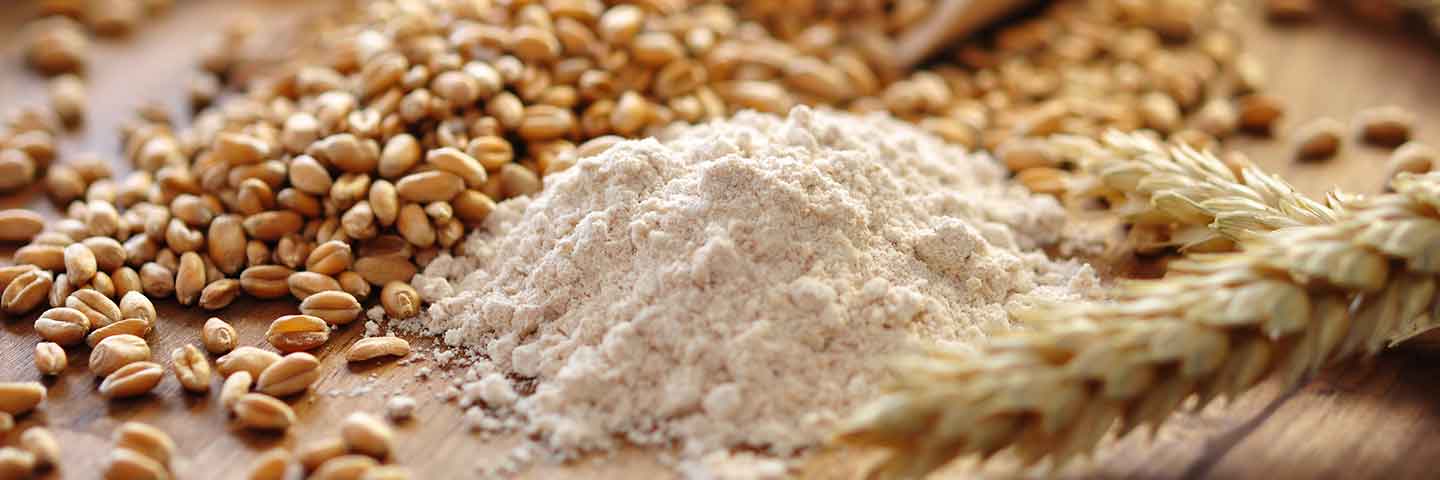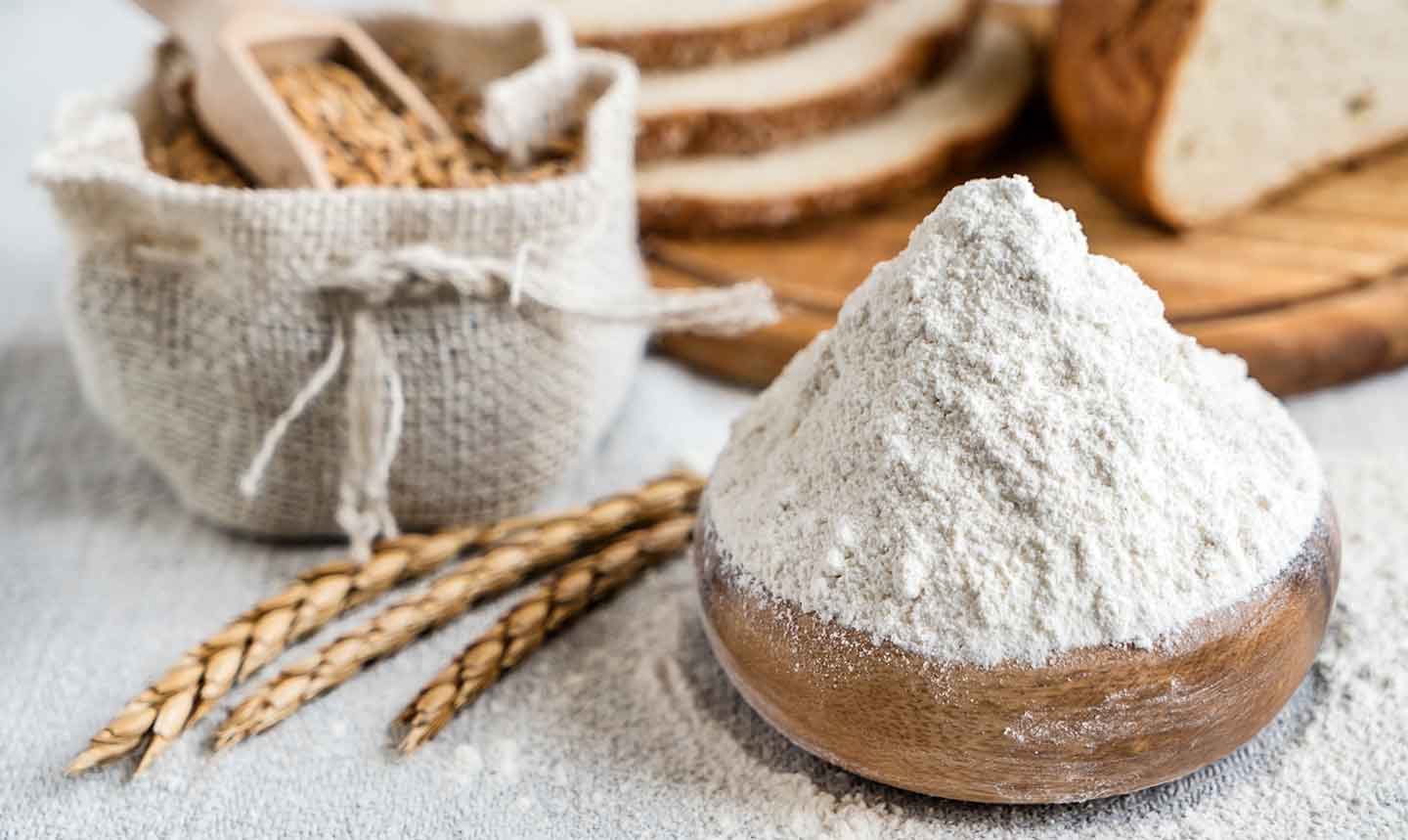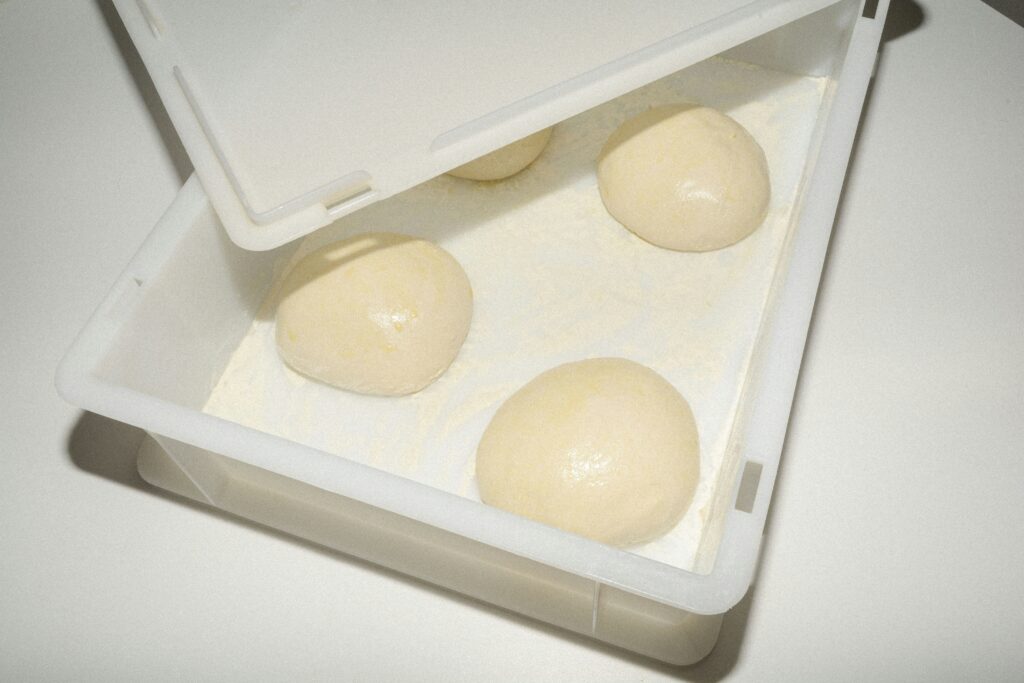Made from milling wheat, flour is composed of different elements such as protein, carbohydrates, water, fat and minerals.
In this article we will talk about proteins, which through mechanical kneading action and water create GLUTEN, an organic compound consisting of amino acid sequences linked together through peptide bonds. Gluten is contained in many cereals including wheat, rye, spelt, Khorasan, barley, and oat.

The proteins contained in wheat flour represent on average about 12% of the weight of the caryopsis and have mainly structural and enzymatic functions: structural proteins give rigidity to biological components that would otherwise be fluid; enzymatic proteins speed up chemical reactions within the dough.
Proteins are divided into soluble proteins (albumin and globulin), which account for 20% of the total, and insoluble ones (gliadin and glutenin), which account for the remaining 80%. Not all types of wheat contain the same proportions. Wheat genetics determines the quality of gluten, particularly in ancient grains, i.e. cereals that were grown in Italy at the beginning of the last century, abandoned in the second half of the twentieth century due to yield issues and resumed in recent years.
This type of wheat does not have a lower amount of protein – as it is believed – but a different quality of gluten than currently cultivated wheat. It is a kind of gluten that absorbs less amount of liquid with a different toughness and less resistant gluten net. This factor is unattractive to industries, which prefer more structured cereals in order to obtain voluminous, alveolated baked goods. Due to the diversity of the chemical structure of proteins and their bonds, food made from ancient grains tends to be more digestible.
Gliadins and glutenins are hydrophobic proteins. The former are responsible for the extensibility of dough, while glutenins are responsible for its toughness. During the mechanical kneading action, thanks to water, these proteins bind together forming a three-dimensional net called gluten. Gluten has a viscous, compact and elastic structure capable of absorbing water during kneading and retaining carbon dioxide during leavening. Obtaining a well-developed gluten depends on the quality of the proteins in the flour and the proper kneading process.

Gluten, therefore, depends on the quality of the proteins. This characteristic is very evident in dough processing. Kneading time, absorption, leavening time, and volume of the finished product are all aspects that define the strength of the flour.
Flour with high gluten content will produce a tight gluten net with high capacity to hold fermentation gases by requiring longer leavening times. Moreover, strong flour can absorb large amounts of water, resulting in voluminous products with highly developed alveolation. Weak flour, on the other hand, has little water absorption capacity, and if kneading is prolonged for a few minutes, several problems emerge that can be seen in a sticky dough, difficult to form, and not very likely to retain the carbon dioxide produced by the yeast, resulting in underdeveloped and poor-quality products.
All cereals containing gluten have always been a primary source of sustenance, have provided for nutritional needs around the world, and it is advisable to eat them in order to have balanced nutrition. Nonetheless, those with a permanent gluten intolerance are forced to eliminate gluten-containing food from their diet. On supermarket shelves we increasingly find products labeled “gluten-free,” a lure that makes the end consumer perceive that gluten-free eating is good for you. Removing gluten from your diet if you do not have certified issues is not a solution; on the contrary, it often leads to a lack of nutrients such as fiber, vitamins and minerals like iron, magnesium, zinc, selenium and calcium. In addition, “gluten-free” labeled products on the market are often rich in saturated fats and thickeners and have high glycemic indexes, all of which are detrimental elements to our health.
In conclusion, if you do not have documented intolerance problems, eliminating cereals such as wheat, barley, rye, and spelt that characterize a healthy diet in favor of gluten-free products can pose a serious risk to your health.



